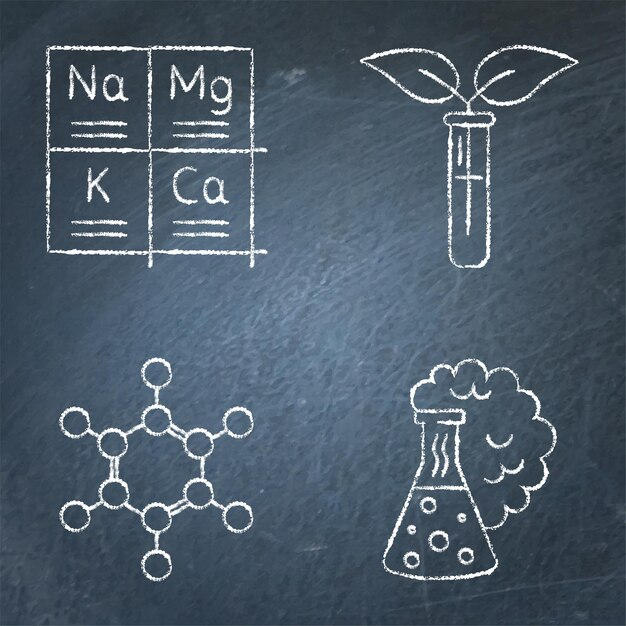




First 20 Elements of Periodic Table with Atomic Number and Mass
The first 20 elements of the periodic table are essential for understanding the basics of chemistry. These elements, starting from hydrogen and ending with calcium, provide the foundation for concepts like atomic structure, bonding, and chemical reactions. Each element has unique properties and is important in science and everyday life. For example, oxygen sustains life, carbon forms the basis of organic chemistry, and calcium strengthens our bones.
This article offers a detailed guide to the first 20 elements, including their names, symbols, atomic numbers, and uses. Designed for students, beginners, and curious minds, this resource simplifies the complexity of the periodic table and helps make learning interactive and enjoyable.

First 20 Elements with Symbols
The first 20 elements of the periodic table, which have atomic numbers 1-20, are listed below.
Memorising the first 20 elements of the periodic table can be challenging, but mnemonics make it easier and more engaging.
How to Remember the First 20 Elements?
To remember the first 10 elements in order—Hydrogen, Helium, Lithium, Beryllium, Boron, Carbon, Nitrogen, Oxygen, Fluorine, and Neon—you can use the following mnemonic:
"Hi He Likes Beans, Brown Cats Need Orange Fluffy Naps."
Breakdown of the mnemonic:
Hi: Hydrogen
He: Helium
Likes: Lithium
Beans: Beryllium
Brown: Boron
Cats: Carbon
Need: Nitrogen
Orange: Oxygen
Fluffy: Fluorine
Naps: Neon
Mnemonic for the Next 10 Elements (11–20)
For the next 10 elements-Sodium, Magnesium, Aluminium, Silicon, Phosphorus, Sulfur, Chlorine, Argon, Potassium, and Calcium—you can use the following mnemonic:
"Silly Monkeys Always Sing Perfect Songs Clapping Around Kind Cows."
Here’s the breakdown:
Silly → Na (Sodium)
Monkeys → Mg (Magnesium)
Always → Al (Aluminium)
Sing → Si (Silicon)
Perfect → P (Phosphorus)
Songs → S (Sulfur)
Clapping → Cl (Chlorine)
Around → Ar (Argon)
Kind → K (Potassium)
Cows → Ca (Calcium)
The Role of Atomic Numbers and Symbols in the Periodic Table
The periodic table organises elements using atomic numbers and symbols, which are essential for identifying and understanding elements. The atomic number indicates the number of protons in an atom, while the symbol serves as a shorthand for the element's name. Together, they help classify elements and predict their behaviour, making them fundamental to the study of chemistry.
Atomic Numbers: The Building Blocks of Order
The atomic number is the number of protons in an atom's nucleus and is the fundamental organising principle of the periodic table. It determines the element's identity and its position in the table. For example:
Hydrogen (H) has an atomic number of 1, making it the first element.
Oxygen (O) has an atomic number of 8, defining its unique properties.
The atomic number also reflects the number of electrons in a neutral atom, influencing its chemical reactivity and bonding behaviour.
Symbols: The Universal Language of Chemistry
Element symbols are one- or two-letter abbreviations derived from their English or Latin names, making them a concise and universal way to identify elements.
H: Hydrogen
Au: Gold (from Latin "Aurum")
Fe: Iron (from Latin "Ferrum")
These symbols simplify communication, especially in complex chemical equations and formulas, providing clarity and global understanding.
Why are Atomic Numbers and Symbols Important?
Order and Classification: Atomic numbers arrange elements systematically, revealing trends in properties like electronegativity and atomic radius.
Universal Identification: Symbols transcend language barriers, enabling scientists worldwide to collaborate effectively.
Predicting Properties: Atomic numbers help predict an element's chemical and physical behavior, essential for research and innovation.
Applications of Elements in Real Life
Facts for some of the most important elements in the periodic table:
Conclusion
Hence knowing about the first twenty elements of the periodic table is the basic step to gaining knowledge about all the elements. This article will develop an understanding of atomic numbers and symbols of elements.
FAQs on First 20 Elements of Periodic Table
1. What is the significance of the first 20 elements in the periodic table?
The first 20 elements form the basis of chemistry, showcasing essential chemical trends and properties. Many of these elements, like Oxygen, Carbon, and Calcium, are crucial for life and have widespread applications in science, industry, and daily life.
2. What are the uses of the first 20 elements in real life?
Elements like Hydrogen are used as fuel, Helium for balloons, Carbon in organic compounds, Nitrogen in fertilizers, and Calcium for bone health. Each element has unique applications in industries, agriculture, and healthcare.
3. What are the trends in the periodic table among the first 20 elements?
Across the first 20 elements, periodic trends like increasing atomic number, decreasing metallicity across a period, and increasing ionization energy can be observed, helping understand their chemical behavior.
4. Which of the first 20 elements are metals, nonmetals, or metalloids?
Metals include Lithium, Beryllium, Sodium, Magnesium, Aluminum, Potassium, and Calcium. Nonmetals include Hydrogen, Carbon, Nitrogen, Oxygen, Fluorine, Neon, Phosphorus, Sulfur, Chlorine, and Argon. Silicon is the only metalloid in the first 20 elements.
5. How do the first 20 elements help us understand chemical reactions?
The first 20 elements demonstrate key reaction types, such as combustion (Oxygen), acid-base reactions (Sodium and Calcium), and covalent bonding (Carbon). They provide foundational knowledge for studying chemistry.
6. How can I remember the first 20 elements?
To remember the first 20 elements, mnemonics like "Hi He Likes Beer But Could Not Offer Full Nice Sodium Magnesium Aluminum" can be used, focusing on the first letters of each element.
7. Why are the first 20 elements important?
The first 20 elements are foundational in chemistry, covering essential elements for life and industry.
8. What is the significance of the first 20 elements of the periodic table?
The first 20 elements of the periodic table provide a basic understanding of element properties and reactivity.
9. How are the first 20 elements grouped in the periodic table?
The first 20 elements are grouped based on their properties into metals, nonmetals, and noble gases, with increasing atomic numbers.























